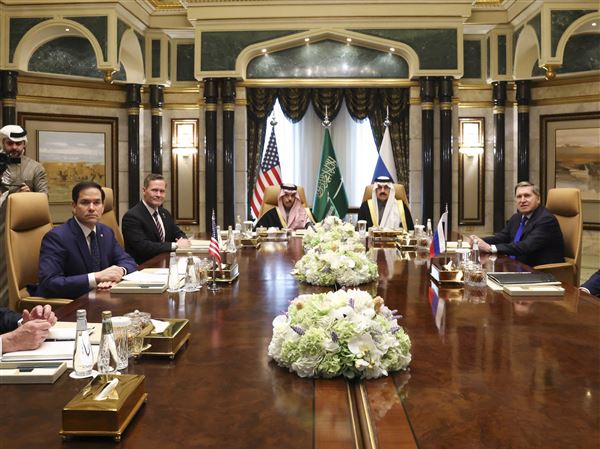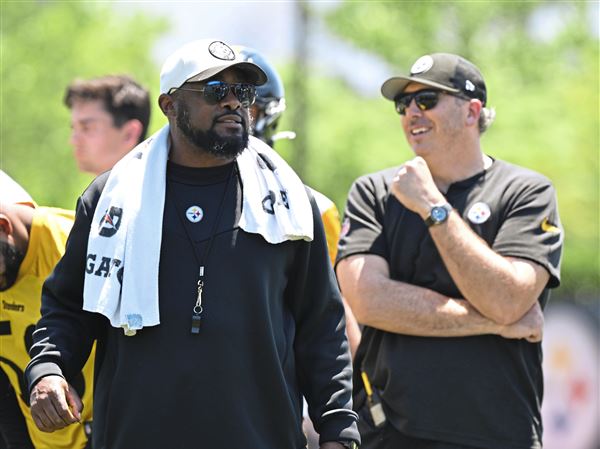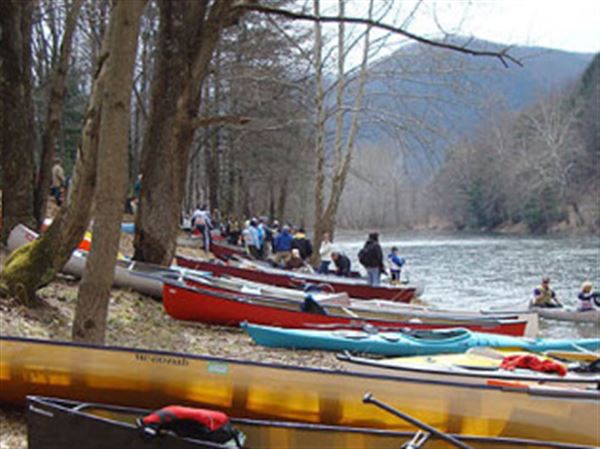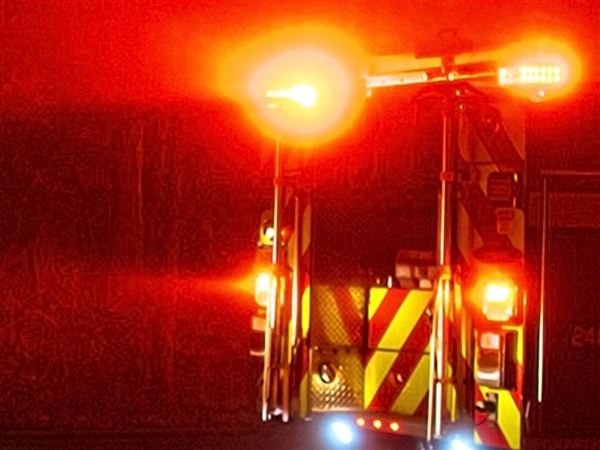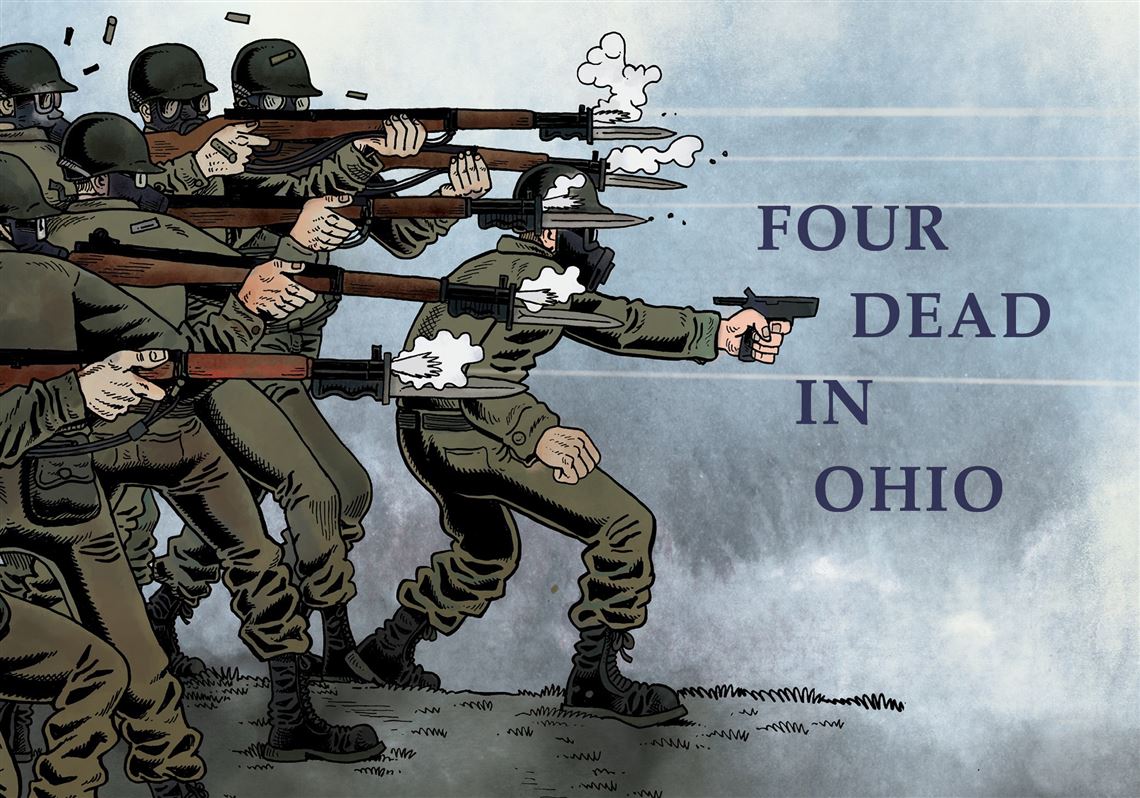Cleveland artist John “Derf” Backderf is not one to shy from controversy.
Eight years ago, he published “My Friend Dahmer,” a graphic novel that lived up to its title, portraying a cannibal with understanding, even compassion. For the past few years, Derf has been developing “Kent State: Four Dead in Ohio,” his graphic recreation of the killings at the northeastern Ohio university following the U.S. invasion of Cambodia.
Abrams ComicArts ($24.99)
Even though we know how this turned out — Crosby, Stills, Nash & Young immortalized it fast in the song “Ohio” — the story continues to shock.
Derf’s tools, as always, are anger, curiosity, in-your-face artistry and remarkable reportorial skills. Read this book all the way through the footnotes, which list sources for each scene. “Kent State,” his most ambitious work, was to be published in time for the 50th anniversary of the massacre, but COVID-19 took over — and deepened the parallels between those oppressive times and today’s broken politics. This is history as timely as it gets.
“Kent State” is Derf’s powerful interpretation of the day the Ohio National Guard fired 67 shots, killing four students and wounding nine others. It tracks Allison Krause, Jeffrey Miller, William Schroeder and Sandra Scheuer on their unwitting path to death by fusillade that horrific morning. Through interviews with survivors, Derf tells us what those four were doing on the weekend before they were killed.
The book begins the Friday the National Guard was called to nearby Richfield, Ohio (Derf’s hometown), to squelch a truckers’ strike and runs through the fateful Monday of the killings. “Kent State” is handsomely produced, with a graphic hard binding and printing on heavy stock. The book’s heft underscores the psychological weight of its topic. Each day gets a separate section, and as they accumulate, so does the tension. The book not only illuminates history but also brings a form of closure to an unforgivable, inexcusable episode.
Derf’s art is black and white, making “Kent State” as immediate as a vintage newsreel. Packed with markers such as “Let It Bleed” (a seminal 1970 album by the Rolling Stones) and a reference to Joseph Heller’s anti-authoritarian novel “Catch 22,” the book depicts a turning point in U.S. history. The state-sanctioned murders at Kent State, along with the rock and roll debacle at Altamont, where the Stones stood by as a Black man was murdered by a member of the Hells Angels, shut the lid on the idealism of the 1960s.
Derf gives the book rhythm by varying the number of panels per page. He also varies the panel style for maximum impact, devoting a full page to an intimidating, almost vertiginous “snapshot” of protesters marching in tight formation toward Kent police as the city’s mayor declares a state of emergency. The top and middle of another page transmit the anxiety of living in an occupied town, bottoming out with a single panel of helicopters hovering over Kent’s water tower.
Derf zeroes in on the disruption with a four-panel page showing cameos of Kent State students making it through a tense night. He crams a ton of history into a two-page spread profiling authoritarian Ohio Gov. James A. Rhodes within a capsule survey of protests roiling other Ohio campuses. Authority figures from Rhodes to the clueless Robert Canterbury, second in command in the guard, get no respect here.
While the book focuses on the four students who were killed, Derf develops other characters, including conflicted, directionless guardsmen who didn’t know what they were doing at Kent State, and Terry Norman, who posed as a student journalist while actually working as a FBI informant. You can almost hear the dialogue in pages 214-15, the visual equivalent of crosstalk. Vividness and impact are in full play on every page — especially the ones that show Krause, Miller, Schroeder and Scheuer dying from shots fired by the guard’s G Troop. Derf’s increasingly stark and anguished art cries for them and for survivors like Alan Canfora, shot through the wrist; Dean Kahler, instantly paralyzed by a shot in the back; and James Russell, hit in the forehead and thigh when a shotgun blast ricocheted off a tree.
National Guardsmen deployed in June to clear a path for a photo-op for our current president reminds us of the ease with which military force can be summoned to deal with, or silence, civic disturbance. Fifty years ago at Kent State, law enforcement overreaction created a national tragedy.
Carlo Wolff is a freelance journalist in suburban Cleveland. “Trying Times,” a memoir he co-wrote with its subject, lawyer Terry Gilbert, will be published soon.
First Published: December 1, 2020, 12:00 p.m.

